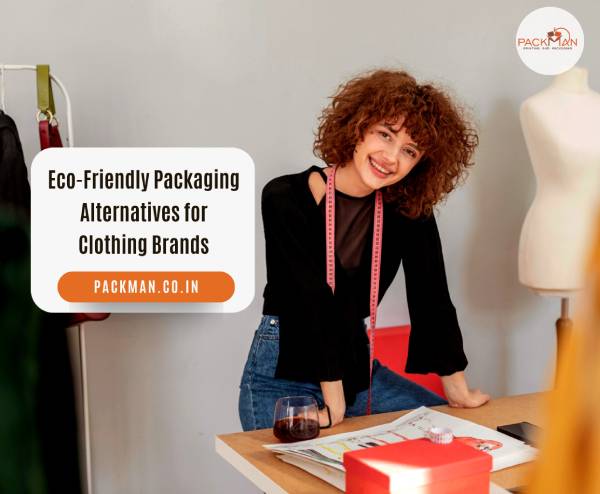As Stated by India’s Leading Packaging Manufacturer Packman Packaging
The growth of e-commerce has led to an increase in the use of plastic for packaging, from the bag or box in which the order arrives, to the individual bags the clothes and accessories are packaged in, everything is made from plastic.
Even when brands try their best to use sustainable packaging, it is probably that plastic packaging was used further up in the supply chain and they are not necessarily aware of it. Items are mostly shipped to the brand’s distribution centers, shops, or to other parts of the supply chain in plastic packaging, to prevent them from getting damaged.
With the emergence of more online shopping and a boost in the number of clothes purchased every year, we are also witnessing an increase in plastic packaging used by many clothing brands.
It is essential to keep in mind that eco-conscious buyers not just care about sustainable production but also about sustainable packaging. For brands that really wish to embrace sustainability as a core value, a number of alternative packaging options are present as stated by Packman Packaging, India’s top packaging manufacturer and supplier of packaging boxes for clothing brands in this blog.
Compostable packaging is made from plant-based materials and can break down at the end of their lifecycle, presenting the earth with useful nutrients. However, that does not mean one can dispose off their compostable packaging anywhere they want.
As the name says, it has to be disposed off properly and added to a composting bin post its use. Many brands attempt greenwashing in this context, going so far as to use the word ‘compostable’ when they actually mean biodegradable. In case of compostable packaging, brands must ideally share special instructions with respect to the disposal of their packaging.
One concern that is yet to be resolved is that the manufacturing of compostable bags is time-consuming, expensive, and there is inadequate infrastructure in place to make it a standard across the fashion industry. However, as more brands start to recognize the merits of compostable packages, one can expect more investments to solve these challenges, in the not-so-distant times.

Recycled packaging
Partially, recycled or 100% recycled packaging is gaining traction with eco-friendly brands. There are, actually, a number of packaging alternatives that one can explore which includes paper bags, bioplastics, cardboards etc.
It is not unjust to raise the claim that paper and cardboard packaging are not resistant to water, but that too can be resolved. Paper packaging having mineral coating is being adopted by industry leaders and one such example is with a leading cosmetics brand. Such containers keep the contents safe from getting wet and dry quite rapidly when exposed to water.
A minimalistic way towards packaging
Though the sustainable packaging movement is a commendable one and the alternatives mentioned above are all better compared to plastic, minimalist packaging is also a solution to the plastic problem. Brands must start using compostable or recycled packaging, but this needs to be complemented with a decreased usage of packing altogether. The decision makers must start to ask the question: “Is this piece of packaging completely necessary?”
Online orders are mostly packaged in far more layers than strictly needed to prevent exposure, and in several cases, for aesthetic purposes. This also implements the size of the package.
When you are shipping a product, the package needs to be able to hold the product safely but it does not need to be big enough to fit 3 of those in there. A major step in controlling plastic pollution will be to get rid of those excess packaging.
Benefits of using sustainable packaging
· It is a responsible decision that supports the planet and reduces pollution
· Decreased packaging can help in price reduction
· Sustainable packaging supports brands to win the loyalty of eco-conscious buyers
· Smaller packages are simple to ship and transport




